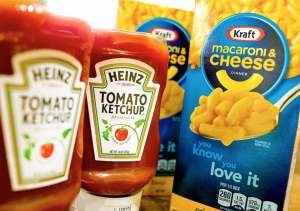by: Bob Goldin
February 22, 2019
 On February 21st, Kraft Heinz announced a profit decline, a 36% dividend cut, an SEC investigation of its accounting practices, margin contraction, lower realized prices, cost headwinds, potential asset sales, a bleak outlook for 2019 and, shockingly, a $15.4 billion asset impairment charge. Talk about bad news.
On February 21st, Kraft Heinz announced a profit decline, a 36% dividend cut, an SEC investigation of its accounting practices, margin contraction, lower realized prices, cost headwinds, potential asset sales, a bleak outlook for 2019 and, shockingly, a $15.4 billion asset impairment charge. Talk about bad news.
The $15.4 billion write-down amounts to close to 25% of shareholder equity, and we believe it is the largest such charge ever taken by a CPG company.
The market reaction to Kraft Heinz’s disclosure has been immediate and totally predictable: a 25+% decline in its stock price, analyst downgrades, collateral damage to other CPG company stock prices, and a fair amount of “I told you so’s” from industry “experts”.
The Kraft Heinz debacle may prove to be a turning point in the packaged goods industry. At a minimum, it should lead industry participants to do some very serious “soul searching” on their strategic priorities and initiatives. To add some context to this observation, we offer up the following:
- Branded CPG companies, especially in the food and beverage vertical, bemoan that consumer tastes are changing, private label and “upstart” companies are gaining share, and new channels are burgeoning. While all this is true, the shift is gradual, and the impact is nuanced. In retail, private label is around 18%, up about 10 basis points per year; in foodservice, private label share is higher and growing faster. Nontraditional channels are growing at 8–10% per year but are only about 8% of total food and beverage sales (excluding alcohol). And in most major categories, small companies have aggregate shares of 15% or less. The $1.6 trillion food and beverage industry is still dominated by “big brands” and traditional retail and foodservice channels. The sheer size and structure of the market means that many growth opportunities for major companies exist.
- CPG companies also contend that declining center store volumes are adversely impacting their businesses. While shelf stable and frozen foods have experienced volume declines over the past five years (in retail and foodservice), the decline is very modest (in the -1% range). Yes, the food and beverage industry is slow growing, but it is huge and stable. There is plenty of headroom for adaptive branded companies.
- From a number of food company management comments, it appears that the changes taking place in the industry are somewhat unexpected and/or more rapid than anticipated. We are not sure why that sentiment exists as the trends have been evident for quite some time and, unlike previous times, there is a wealth of consumer insights available to help set or reset strategic direction.
- Kraft Heinz is under the control of 3G Capital (3G). 3G is best known for implementing zero based budgeting (ZBB) at its portfolio companies. ZBB is about maximizing profitability through radical cost cutting; it fundamentally eschews most investments, including brand building, channel and market expansion and innovation. Since Kraft Heinz was formed in 2015, the company has achieved industry leading margins but has experienced share erosion in many core categories, suffered from a loss of human capital and trade respect, had a 38% loss in market value and has not had any top-line growth. By virtually all accounts, the company has underinvested in brand development and is now paying the price.
Until recently, the 3G approach was lauded and aggressively adopted by many major CPG companies. While we believe most companies can benefit from a bit of belt-tightening from time to time, the maniacal focus on cost cutting will not ultimately serve the interest of company stakeholders, customers or consumers. The dismal results of Kraft Heinz clearly demonstrate that companies cannot cut (or buy) their way to growth; they have to earn it through strategic investments in their core businesses. We urge all companies to recommit themselves to growing the “old fashioned way” – through smart investment in people, products, processes, customer relationships and market reach.
To continue the conversation on this topic and learn how Pentallect can assist in evaluating and enhancing your organization’s strategic growth plan, please:

